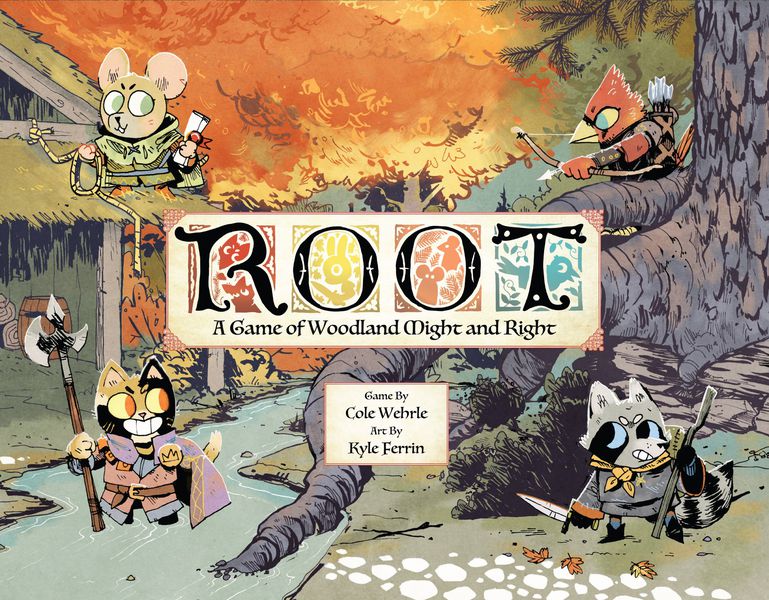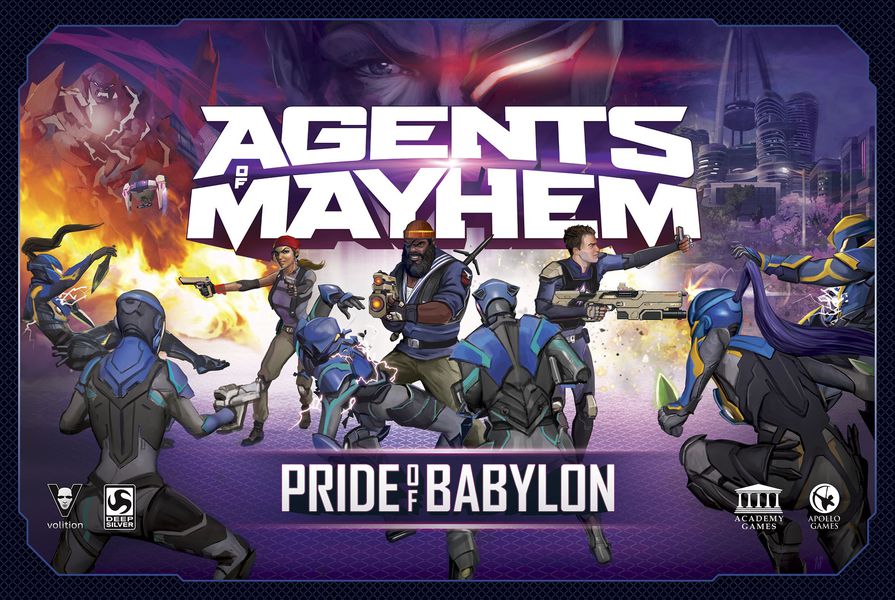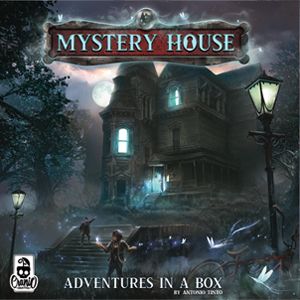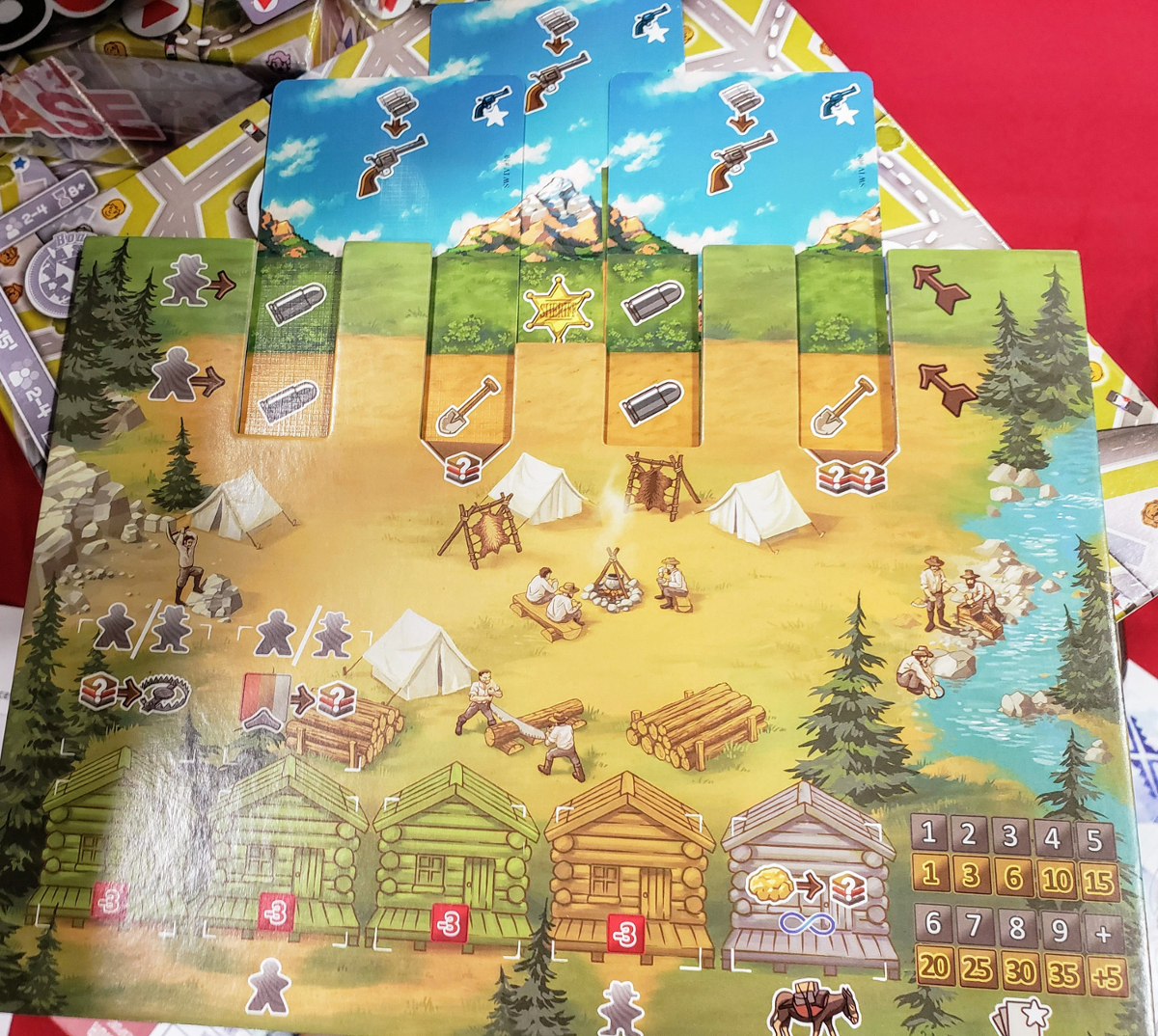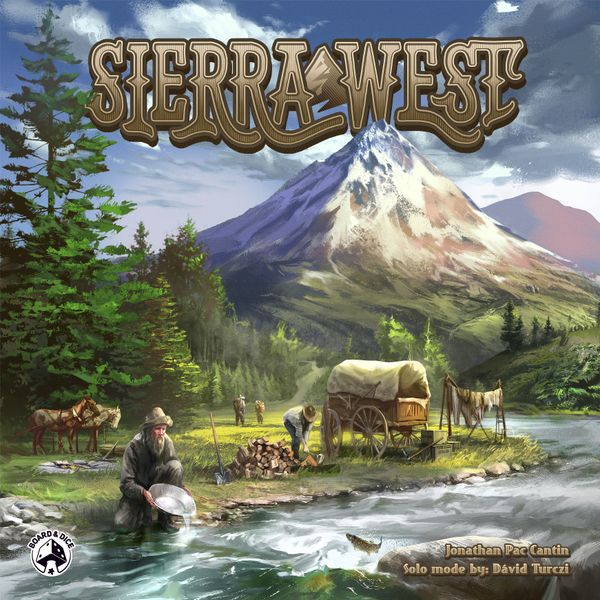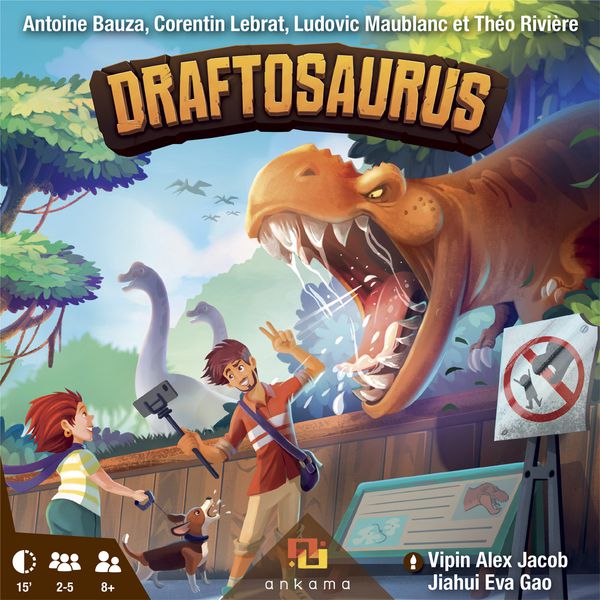Conventions can be a strange thing to encapsulate, regardless of their size, audience, or industry. They can be small and intimate, a gathering of individuals coming together over a shared interest, whose focus is primarily on the human experience of spending time with other attendees. Or they can be massive and cavernous, existing as part spectacle, part cacophony of shared voices, and whose purpose is enticing you into booths to dazzle, delight – and hopefully purchase something. There are expos to show off trends and demonstrate upcoming projects to fellow denizens within the same industry and laid back free-for-alls that are slightly more than an organized excuse to hang out in a hotel ballroom for several days.
Conventions are wide-ranging and varied, each catering to different sensibilities and interests. Whether your primary motivation is to be informed, to exercise your purchasing power, or to catch up with friends and acquaintances, there is a con for you out there. Guaranteed. The trick is figuring out which convention suits you best.
 Of course, all of this is predicated on the notion that you want to, or are even able to, attend a convention. In the age of the internet, when information is easily shared and accessible online, the concept of a captive audience descending on a convention hall in the middle of some city is, at best, a luxury expenditure of your time, and at worst, an outmoded form of disseminating information. Attending a convention requires valuable time, money, and resources that not everybody has in abundance, let alone the necessary energy (both physical and mental) to partake being around a sea of people for several days at at time. While they can be fun and beneficial, their existence – and your participation in them – is rarely instrumental to an industry’s existence or a viable means of validating your place within it.
Of course, all of this is predicated on the notion that you want to, or are even able to, attend a convention. In the age of the internet, when information is easily shared and accessible online, the concept of a captive audience descending on a convention hall in the middle of some city is, at best, a luxury expenditure of your time, and at worst, an outmoded form of disseminating information. Attending a convention requires valuable time, money, and resources that not everybody has in abundance, let alone the necessary energy (both physical and mental) to partake being around a sea of people for several days at at time. While they can be fun and beneficial, their existence – and your participation in them – is rarely instrumental to an industry’s existence or a viable means of validating your place within it.
As we descend into what was Origins 2019, let this be a reminder that it’s perfectly fine to not want to go to conventions, just as much as it’s fine that you can’t attend every convention you’d want to. Not every convention is aimed at the same people, and all of them are completely optional. At no time are you any less of a gamer for opting out of them.
This was a thought that routinely went through through my head as I returned to Origins for the second time in three years. While this trip inevitably went much smoother than in 2017, I was still nevertheless curious on how the convention would stand up to my recollection of it, and how it had changed – if at all – since I last visited Columbus.
Why Origins Is Worth It…
Two years ago, upon my first trip to Origins, I addressed the pivotal question: is Origins worth going to? And the answer was, largely, yes. Despite a number of areas where it had (and still has) room for improvement, in general Origins has a bit of something for everyone, from scheduled events and demos, to robust game space, ample food options, and accessible housing. Its geographical location makes it relatively easy for wide swaths of the country to get there, and its June operational dates for many gamers makes it a nice mid-year option for those looking for an excursion to the mystical lands known as Ohio.
At the moment, Origins is the second largest board game convention in North America after Gen Con, although it is entirely likely will be overtaken soon by PAX Unplugged. While PAX doesn’t release its attendance numbers and makes it hard to compare, they are anecdotally close in size. Origins 2019 hasn’t posted its official numbers as of this writing, but early estimates would put it around last year’s numbers in 18-19,000 range. Big enough to have lots to do but still small enough not to be absolutely overwhelmed.
Origins has also made a name for itself in trying to be a casual-friendly game convention, accessible both to the hard core enthusiasts and the average family gamer. This is a convention where many attendees see older and evergreen titles for the first time, exploring the hobby with a fresh perspective. As a result, if you spend time in the Origins expo hall, you are just as likely to see new games for sale as you will those who have been on the market for months or even years.
For the most part, this is a positive thing. Origins provides a game convention where the general consumer can go and explore one thing while the enfranchised folks can do another. Under new staff organization, Origins 2019 took additional steps to bolster this kind of blended atmosphere and make it more friendly overall. Many of these changes were welcomed and long overdue, such as better directional signage, messages about cosplay and consent, and a more assertive policy on harassment.
Perhaps the biggest change though was the ample increase in places for open gaming – now with tablecloths! – spanning the better part of two play halls and several ancillary ballrooms across a few of the connected hotels. Compared to past years, where sitting down to play a game was an outright ordeal, this year was a refreshing change of pace and was welcomed by all.
…And Where It Can Improve
Nor is this to say that Origins is the theoretical “perfect” convention, as there is certainly still much room for improvement here. Although major strides were made in 2019, there were still systemic issues to be redressed, including the better but often still disjointed communication between and with the organizers, a terribly outdated and obtuse event system, and the fact that despite some efforts to jazz it up, most people still didn’t really care about the Origins Awards.
Congrats to Root for winning yet another well-deserved top award, but there’s still some ironing out to be done there.
Also, they still haven’t redressed the lack of widespread and easily accessible water dispensers. Call it a personal gripe, but this should be easy to correct.
Moreover, I would personally find it hard pressed to say any convention is perfect when, yet again, there were anecdotal reports of attitudes and commentary by a small handful of con goers that was at best bigoted, and at worst, outright racist. Which to me is completely unfathomable and totally unacceptable.
Gamers themselves are the last people who should be espousing exclusionary behavior towards other gamers on any grounds, let alone along lines so prejudiced and cruel. And to do it at convention that runs concurrently on literally the same street and day as the city’s annual Pride parade seems completely antithetical to the most basic tenants of human dignity. While there are jerks in any community, and Origins themselves can’t wholly control the beliefs of every person to attend their convention, its attendees can and should call out or report that sort of behavior. I regrettably will concede the point that similar unreported things happen at other major game conventions as well, but it seems like every year Origins has to contend with yet another scandal along these lines and it needs to stop. And that will require the actions of its organizers and its attendees.
Then there’s, you know, the games themselves.
New Origins Releases
If you’re someone who goes to a game convention to scope out brand new releases, Origins is not your convention. Although there were a fair amount of games released at or just prior to this year’s Origins, the vast majority of heretofore unreleased titles were demos only and not for sale. Most publishers reported sales overall as solid, but in its present form this is very much a preview convention.
Welcome to Origins: See You At Gen Con.
Still, it says something about the hobby when that statement can be true but also be a case where roughly 50 games were making their US convention sales debut, with wider releases either coming immediately before or immediately afterwards. Below are just some of the notable titles at this year’s convention:
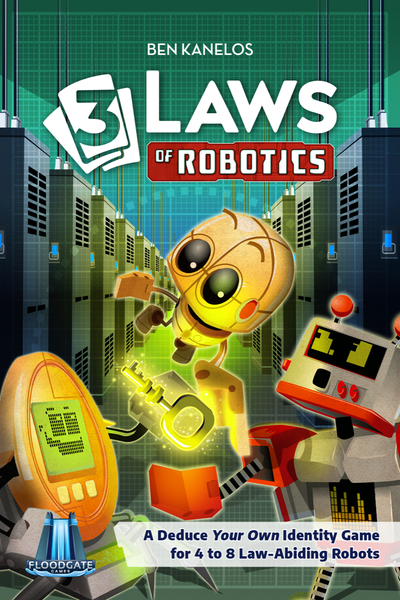 3 Laws of Robotics: A quick and cute inverted social deduction game where you know everyone else’s identities except your own. While Bosk was the biggest draw at the Floodgate Games booth, this one made its presence known all the same. It was for sale at the convention but its wider release will be close to Gen Con.
3 Laws of Robotics: A quick and cute inverted social deduction game where you know everyone else’s identities except your own. While Bosk was the biggest draw at the Floodgate Games booth, this one made its presence known all the same. It was for sale at the convention but its wider release will be close to Gen Con.
A.E.G.I.S. Scenario Book: Part mini-expansion, part art book, this companion piece to the affable robot fighting game A.E.G.I.S. provides, in addition to concept art and design, several long-awaited map scenarios to shake things up on the battlefield beyond your basic skirmishes.
Arraial: One of two new releases for Pandasaurus, Arraial was the lighter of the two. Originally a 2018 Essen release, players are placing polyomino pieces on a board to create the most popular neighborhood as part of the annual Portuguese summer celebrations.
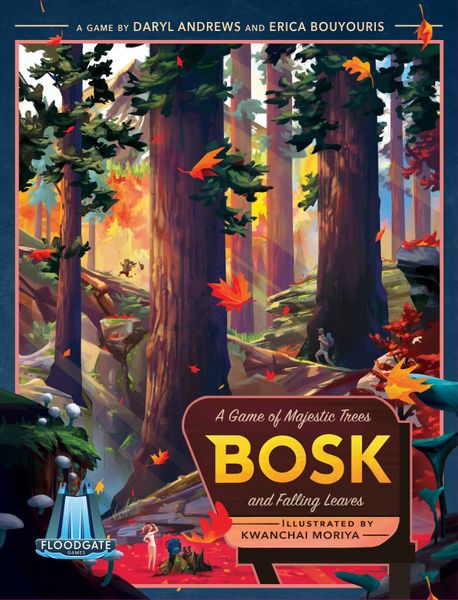 Bosk: Bosk made its convention debut at Origins this year, with a retail release slated for just a few weeks from now in mid July. In this highly colorful (and surprisingly competitive) area majority game, players spend the first part of the game numbered planting trees in a grid, then gear shifts as you spend the latter half dropping leafs on the ground based on those tree placements.
Bosk: Bosk made its convention debut at Origins this year, with a retail release slated for just a few weeks from now in mid July. In this highly colorful (and surprisingly competitive) area majority game, players spend the first part of the game numbered planting trees in a grid, then gear shifts as you spend the latter half dropping leafs on the ground based on those tree placements.
Century: A New World: Arguably one of the most anticipated game releases at this year’s convention, New World is the final in the Century series trilogy of games. Sporting a worker placement aspect that differs from its predecessors a bit, this game can be played as a complete standalone game or in various combinations with the two previous Century games.
Copenhagen: Originally part of a Kickstarter preorder, this quick set collection and polyomino placement game was available both in its retail and deluxe forms for sale, with the deluxe version sporting some eye-catching acrylic tile upgrades. And if this half hour version isn’t light enough (somehow), there is apparently also a Copenhagen roll-and-write being planned for Essen release.
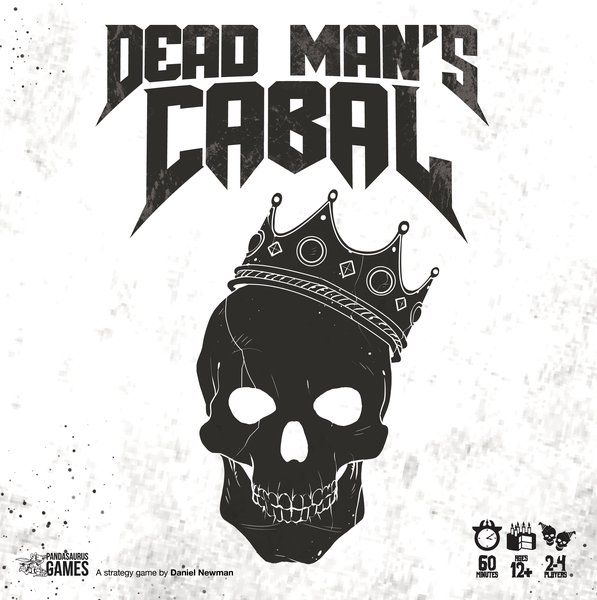 Dead Man’s Cabal: This was Pandasaurus’ other new title at the show, generating a notable contrast in flavor between the games being shown off at the booth. This didn’t stop players from getting their hands dirty with this dark title, however, with ample fanfare both both titles. In this strategic game, each player is a necromancer trying to raise the dead for a party (like you do). Yet you must contend with the fact that the actions you take also aid your opponents, and as such, you’ll need to scheme carefully.
Dead Man’s Cabal: This was Pandasaurus’ other new title at the show, generating a notable contrast in flavor between the games being shown off at the booth. This didn’t stop players from getting their hands dirty with this dark title, however, with ample fanfare both both titles. In this strategic game, each player is a necromancer trying to raise the dead for a party (like you do). Yet you must contend with the fact that the actions you take also aid your opponents, and as such, you’ll need to scheme carefully.
Draftosaurus: Ever wanted to play Dinosaur Island in 15 minutes? If so, this is your game. With a lightning fast play time and adorable dino meeples, this Ankama game by way of Luma was a big hit with con goers. As the aptly named title hints at, in this brisk little title players roll dice and then draft specific dinosaurs into their park. It’s that simple, and yet oh so good. Technically a March release in Europe, this is the first time most American audiences have seen it, so I’m including it here.
Festival of Thousand Cats: Each day of the convention I stumbled upon one surprise game on the expo floor. My Friday surprise was the fact that Tasty Minstrel Games made a limited print run of an English version of Festival of Thousand Cats – an import trick-taking game that I personally have touted for some time. In it you are cats trying to accumulate as much fish as you can without claiming too much drink (they changed liquor to milk in the updated version), until one person hits the VP goal. It’s simple if esoteric (most trick-takers are), and now there’s a renewed chance to get this one on US shores.
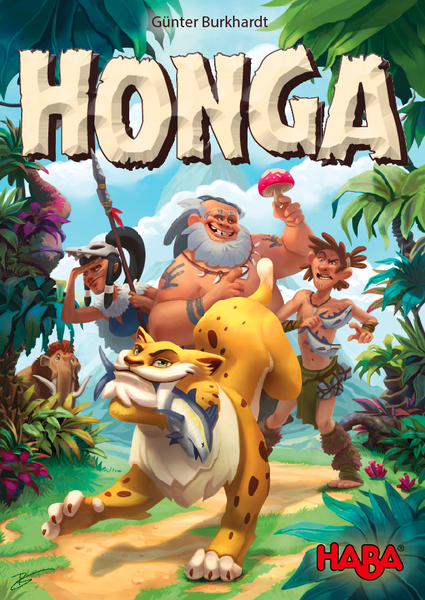 Honga: HABA is known primarily for their small, yellow boxed children’s games, but in the last few years they have started a line of light strategy games as well, such as Adventure Land, Meduris, and Iquazu. Honga is their 2019 title in this line, focusing around a saber-toothed tiger. Using a lightweight but very interesting actions selection system, each turn you play a card that grants you access to a handful of different actions at a time – but not all of them. And if you don’t pay attention to Honga, he will let you know…
Honga: HABA is known primarily for their small, yellow boxed children’s games, but in the last few years they have started a line of light strategy games as well, such as Adventure Land, Meduris, and Iquazu. Honga is their 2019 title in this line, focusing around a saber-toothed tiger. Using a lightweight but very interesting actions selection system, each turn you play a card that grants you access to a handful of different actions at a time – but not all of them. And if you don’t pay attention to Honga, he will let you know…
Harry Potter: Hogwarts Battle – Defence Against the Dark Arts: HP is a big deal at the CR HQ(Go Ravenclaw!), so there’s always skepticism about Harry Potter related games. The OP’s (formerly USAopoly and still getting used to the new brand name) Hogwarts Battle deckbuilder proved to be a pleasant surprise to many including ourselves, and they’re going back to the well here. Using much of the same style artwork and graphics, DADA is a two-player dueling game where you’re students in magic defense and are trying to knock each other out of the ring. We’re cautious on its viability long term, but people did seem to be enjoying it.
Pandemic: Rapid Response: In one of a handful of titles on this list that made their official splash at the convention but inexplicably weren’t for sale yet, fear not: this Target exclusive is hitting stores next week. In yet another Pandemic adaptation, Rapid Response takes the general Pandemic idea of racing against time to save the world, pairs it with the dice rolling aspect of Pandemic: The Cure, and then ups the ante with a timer and real-time gameplay. Well produced and captivating in the madcap way only games of its kind can, this one makes for a brisk and frenetic experience. For those who like the idea of losing to the game in 20 minutes instead of 45, you’ll soon be in luck.
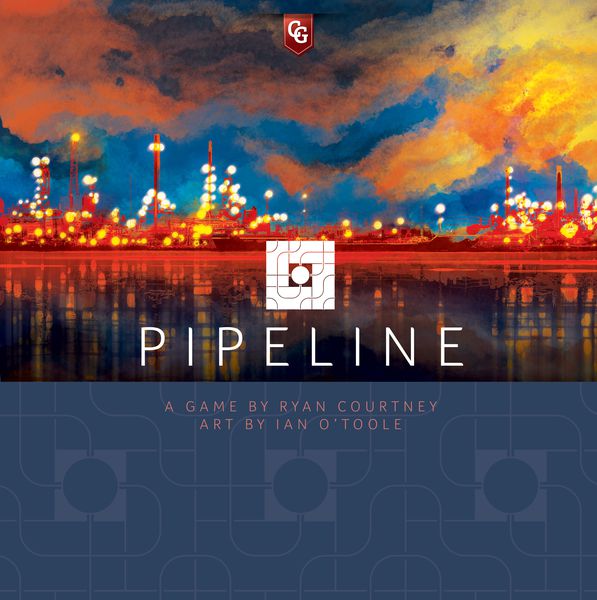 Pipeline: Technically an Origins release by sheer coincidence, the Kickstarter for Pipeline managed to fulfill just in time for the convention, and Capstone Games heartily benefited from this serendipitous event. In most estimations this was among the top three new releases at the convention, and it usually didn’t take much effort finding someone playing it on a table somewhere. And it’s not hard to understand why. With excellent production, a decent table premise, and a deeply puzzly nature, this cerebral game about building an efficient supply line for oil refineries was like a siren’s call to the heavier game crowd, myself included. (And yes, it objectively could have been any supply theme but they went with oil. C’est la vie.)
Pipeline: Technically an Origins release by sheer coincidence, the Kickstarter for Pipeline managed to fulfill just in time for the convention, and Capstone Games heartily benefited from this serendipitous event. In most estimations this was among the top three new releases at the convention, and it usually didn’t take much effort finding someone playing it on a table somewhere. And it’s not hard to understand why. With excellent production, a decent table premise, and a deeply puzzly nature, this cerebral game about building an efficient supply line for oil refineries was like a siren’s call to the heavier game crowd, myself included. (And yes, it objectively could have been any supply theme but they went with oil. C’est la vie.)
Shikoku: Riding high on their success with last year’s reprint of Endeavor, the Grand Gamer’s Guild was showing off two new finished games at Origins, with wider releases slated for next month. One of them was the stranger-to-explain-than-play game Shikoku, which was one of my Essen picks of 2018 that didn’t have a US publisher at the time. Now it does. Basically, Shikoku is a lightweight racing game where the purpose is to come in neither first nor last place and where movement is dictated by which card everyone plays each turn. It’s simple, quick, can play up to 8 people, and above all, is a little different. We for one are glad it’s getting a wider release.
Shobu: Similar in weight and difficulty to other abstract gridded two player games such as Onitama, Shobu made for my joyful Saturday surprise find. Consisting of just four square boards of alternating color, turns consist of you moving a stone from one space to another on one board and then having to mirror that move on another. The goal, simple as it sounds, is to push all four of your opponent’s stones off of one board. It’s different yet familiar in the ways so many decent abstract games are, and if you like these kinds of games, Shobu is definitely worth checking out.
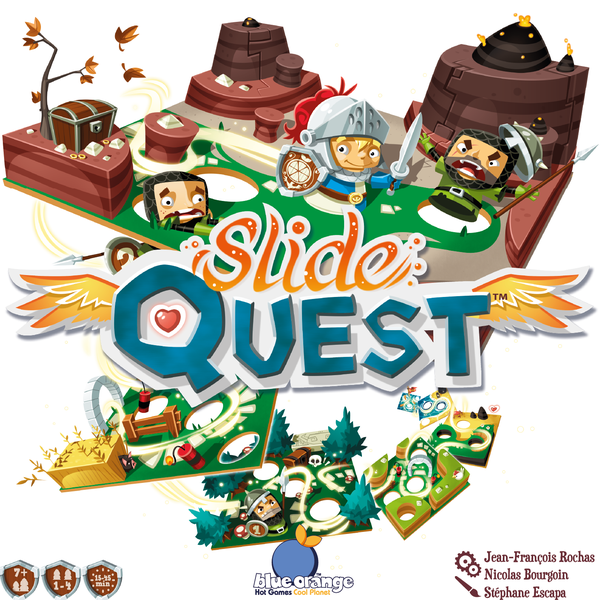 Slide Quest: Meet this year’s Magic Maze. Being put out by Blue Orange, Slide Quest takes the traditional game of Labyrinth and posits what it would be like to play that in real-time, and cooperatively (a la Looney Quest). In it, players work as a team to progress through nearly 20 different board scenarios, which is suspended above the inner box by four levers. Generally speaking, your goal is to collaboratively navigate your hero unit around the board accomplishing objectives, avoiding obstacles, and trying not to fall into the numerous pits. It’s straightforward but engaging and makes for an amusing few minutes of antics.
Slide Quest: Meet this year’s Magic Maze. Being put out by Blue Orange, Slide Quest takes the traditional game of Labyrinth and posits what it would be like to play that in real-time, and cooperatively (a la Looney Quest). In it, players work as a team to progress through nearly 20 different board scenarios, which is suspended above the inner box by four levers. Generally speaking, your goal is to collaboratively navigate your hero unit around the board accomplishing objectives, avoiding obstacles, and trying not to fall into the numerous pits. It’s straightforward but engaging and makes for an amusing few minutes of antics.
The Artemis Project: Grand Gamer’s other new release was their recent Kickstarter about mining the Jupiter moon Europa in The Artemis Project. Primarily a dice allocation game with some modest depth to it, Artemis easily fits among other amiable dice allocation games such as Alien Frontiers or Euphoria. We’d previously vouched for it on social media as part of its Kickstarter campaign (there were plans for a full preview but a prototype mishap waylaid our opportunity), and that was before we saw the final product. Now that we’ve seen the component quality first-hand, we easily still stand by that earlier assessment. If you like dice allocation, keep this one on your radar when it becomes a bit more widespread.
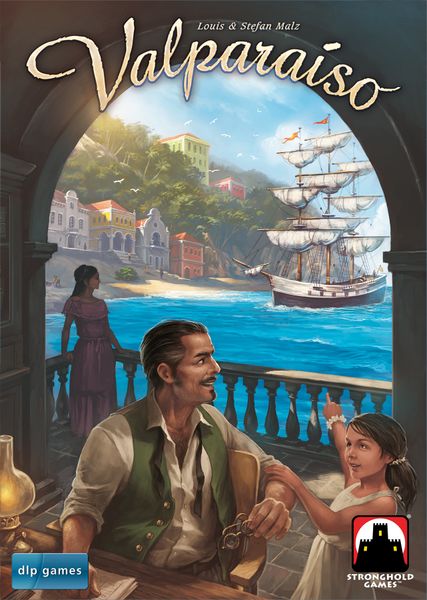 Valparaiso: The Indie Game Studios booth, comprising of both Indie Boards & Cards and Stronghold brands, was hopping per usual, and it may have had the biggest concentration of new and newish titles to show off. The newest of the new, though, was dlp game’s 2018 Essen release, Valparaiso. A strategic programming game, Valparaiso has each players trying become the most prosperous person in this 19th century Chilean harbor town. It seemed to be getting decent reception at the convention, though having played it previously, my personal take is much more muted. It has a lot of individual mechanisms to enjoy, but this game’s particular combination of them came off feeling very flat and lacking enthusiasm. YMMV.
Valparaiso: The Indie Game Studios booth, comprising of both Indie Boards & Cards and Stronghold brands, was hopping per usual, and it may have had the biggest concentration of new and newish titles to show off. The newest of the new, though, was dlp game’s 2018 Essen release, Valparaiso. A strategic programming game, Valparaiso has each players trying become the most prosperous person in this 19th century Chilean harbor town. It seemed to be getting decent reception at the convention, though having played it previously, my personal take is much more muted. It has a lot of individual mechanisms to enjoy, but this game’s particular combination of them came off feeling very flat and lacking enthusiasm. YMMV.
Volcanic Isle: In this game with its hard to remember title, players are on a vast landmass and are trying to build villages and statues across the land to appease the native gods. However, doing so creates volcanic eruptions, which causes whole swaths of the game board to be removed as the game progresses. It’s a neat idea, having a game board continually shrink and fall away as you’re trying to accomplish your goals, (think Survive! or Forbidden Island), and Volcanic Isle encapsulates that idea both in form and function – along with some decent table presence and a healthy dose of take-that antics. It seemed to resonate decently enough in its prerelease ahead of wider distribution in the latter half of July. However, I do have some slight reservation with its theme – basically an alternate Earth where Easter Island was once a much larger continent and the Moai statues being raised were indirectly tied to volcanic activity. I’m waiting till we play this one before I parse that out further, though.
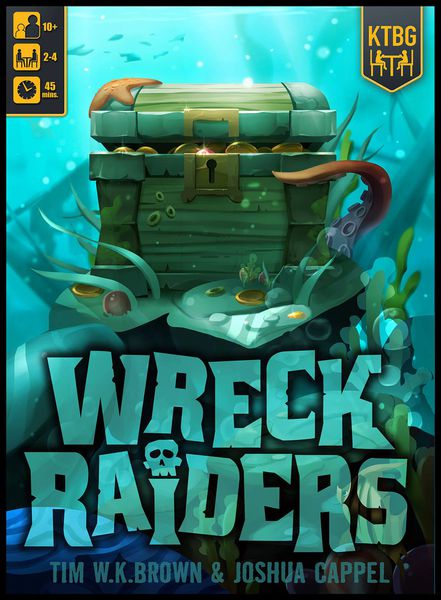 Wreck Raiders: Kids Table BG has been on a quiet roll in the last few years of decent family-weight games, and their latest title, Wreck Raiders, continues that trend. In this colorful and nautical 45 minute dice drafting game, players take turns diving to the ocean floor to recover lost treasures. The catch is that adding your diver to a spot also makes it easier for other divers to dive in that same spot, whether they’re your divers or those of your opponents. With that lightweight tension at the forefront, the race is on to accumulate coin to create exhibits, construct aquariums, and generally be the one to come out on top with the biggest haul. For its big debut, Wreck Raiders definitely made a splash with many Origins attendees.
Wreck Raiders: Kids Table BG has been on a quiet roll in the last few years of decent family-weight games, and their latest title, Wreck Raiders, continues that trend. In this colorful and nautical 45 minute dice drafting game, players take turns diving to the ocean floor to recover lost treasures. The catch is that adding your diver to a spot also makes it easier for other divers to dive in that same spot, whether they’re your divers or those of your opponents. With that lightweight tension at the forefront, the race is on to accumulate coin to create exhibits, construct aquariums, and generally be the one to come out on top with the biggest haul. For its big debut, Wreck Raiders definitely made a splash with many Origins attendees.
Five Upcoming Games To Watch At Gen Con
For as many games that debuted at Origins 2019, there existed at least an equal number being shown off in one form or another in preparation for their upcoming release at Gen Con. Rather than spell out each one, I’ve included five titles worth keeping an eye on in August for one reason or another.
As a note: to help narrow the field a bit, I only included such “Next Stop Gen Con!” games that were on public display. So while there were several upcoming games of particular interest floating around, such as Era: Medieval Age, Football Highlights: 2052, Ishtar: Gardens of Babylon, and Watergate, I wanted to focus on titles that attendees writ large were seeing more than simply those in media.
Agents of Mayhem
Publisher: Academy Games | Players: 2-4 | Play Time: 30-90 Minutes
Based on a video game of which I have no knowledge, Agents of Mayhem has been a title long in the works by Academy Games. It ran a pretty successful Kickstarter back in February 2018 and has been in development and production ever since. However, they have also been showing it off at every major convention they can along the way, partially out of pride and partially as a reminder. Agents is one of first few titles Academy Games has launched in effort to diversify their catalog from solely historical and conflict-driven games, and this departure takes them into some pretty new territory. Agents of Mayhem is a story-driven scenario-based tactical game that can be played in individual missions or as part of an ongoing campaign. It has asymmetric combat. It’s team based. It has minis. And perhaps most impressively is that the board is constructed (or destroyed) in three dimensions over the course of a game, which is always an eye catching feature. It’s an ambitious project, but it appears to be coming along nicely, and finally – finally! – it should be available at Gen Con. If nothing else, I’m really curious to see how their efforts to expand their brand goes.
Also: Furthering those efforts, keep an eye out in July for Academy’s next Kickstarter, One Small Step, a team-based worker placement game about the space race.
Letter Jam
Publisher: Czech Games Edition | Players: 2-6 | Play Time: 30-60 Minutes
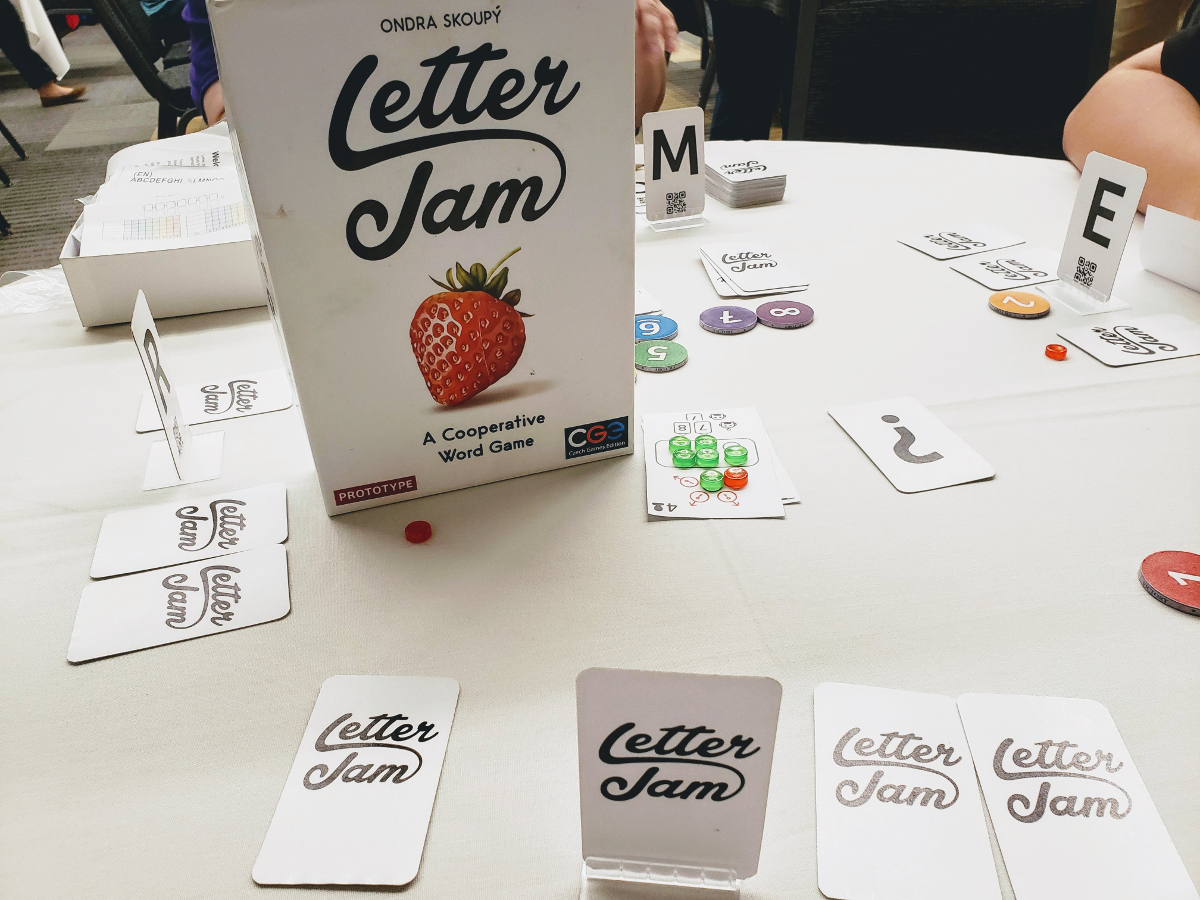 When I first heard of the Letter Jam concept, I was rather skeptical – as one often is with word/letter based games. They are a very hit or miss genre with audiences, and it’s not always easy to guess how the game will play out. On the one hand, Letter Jam was being put out by the same people who made the surprise megahit Codenames. On the other, the game was by a first time designer and the concept at first blush seemed rather generic. So there was some inherent trepidation sitting down to try it, especially running on a mere five hours sleep bright and early in the morning.
When I first heard of the Letter Jam concept, I was rather skeptical – as one often is with word/letter based games. They are a very hit or miss genre with audiences, and it’s not always easy to guess how the game will play out. On the one hand, Letter Jam was being put out by the same people who made the surprise megahit Codenames. On the other, the game was by a first time designer and the concept at first blush seemed rather generic. So there was some inherent trepidation sitting down to try it, especially running on a mere five hours sleep bright and early in the morning.
On the game side, I can easily say those fears have been dismissed. Letter Jam is lovely, and I think it’ll be poised to do well when it releases at Gen Con. It’s unlikely it’ll capture the same lightning in a bottle as Codenames did, but it should be able to stand on its own just fine. It’s also a very different game, despite the commonality of involving words. Essentially, Letter Jam is a cooperative word jumble played Hanabi style and cooperatively. In it, every person at the table is given a word they do not know via a handful of face-down cards. Then, everyone reveals the first letter of those cards and must collectively use some of those letters (along with a couple neutral ones) to provide a word clue, in the hopes of helping you deduce what you think your letter is. Once you do, you move on to your next letter. When the game ends, you then use that collective knowledge to arrange the cards into what you think your word is (though any word will do), and the more people that can successfully do so, the better everyone scores.
Letter Jam is a very clever iteration of the whole “can’t see your cards” style of gameplay, and it’s admittedly much more enjoyable than I initially thought it would be. It’s now moved from a game I was personally unsure about to one I will definitely be picking up in a few weeks.
Also: A word of advice though: don’t play it when you can’t think straight, such as when lacking in sleep. It can be a little embarrassing.
Mystery House
Publisher: Cranio Creations | Players: 1-5 | Play Time: 60 Minutes
Speaking of companies looking to broaden their image, enter Mystery House by Cranio Creations. Cranio is an Italian publisher who is mostly known by American audiences for their medium-weight Euro games such as Lorenzo il Magnifico, Newton, and coming soon, Barrage. Traditionally bought over and co-published by CMON, Cranio has restructured its arrangements such that they will now be distributing directly to North American audiences via Asmodee. And with this change comes a desire to increase their presence by offering up some games other than your standard two hour fare. (Not that there’s anything wrong with that.)
Their first real test of this will be the lighter and more immersive Mystery House, where players are cooperatively trying to navigate through this House-sized TARDIS and explore different stories to that end. In it, players must search for clues, deduced riddles, and solve the mystery before time runs out, though Mystery House appears to be poised to operate closer to the T.I.M.E. Stories model of self-contained stories (and story expansions) than an escape room. The coolest thing about the game though, at least visually speaking, is that the house you’re exploring is physically built out of the bottom of the box itself in a labyrinthine style maze, with shifting vertical cards depending on story elements. You’ll also need to bring your own light source to properly investigate the bowels of this strange house out of time and space. It’s certainly an experiment for Cranio, and I’m really curious to see if people enjoy the idea it’s presenting or if it’ll be seen more of as a gimmick.
Also: Speaking of Barrage, while it should be delivering to Kickstarter backers in July and is officially slated as an Essen release, Cranio does intend to have some for prerelease at Gen Con as well. So…
Quirky Circuits
Publisher: Plaid Hat Games | Players: 2-4 | Play Time: 15-30 Minutes
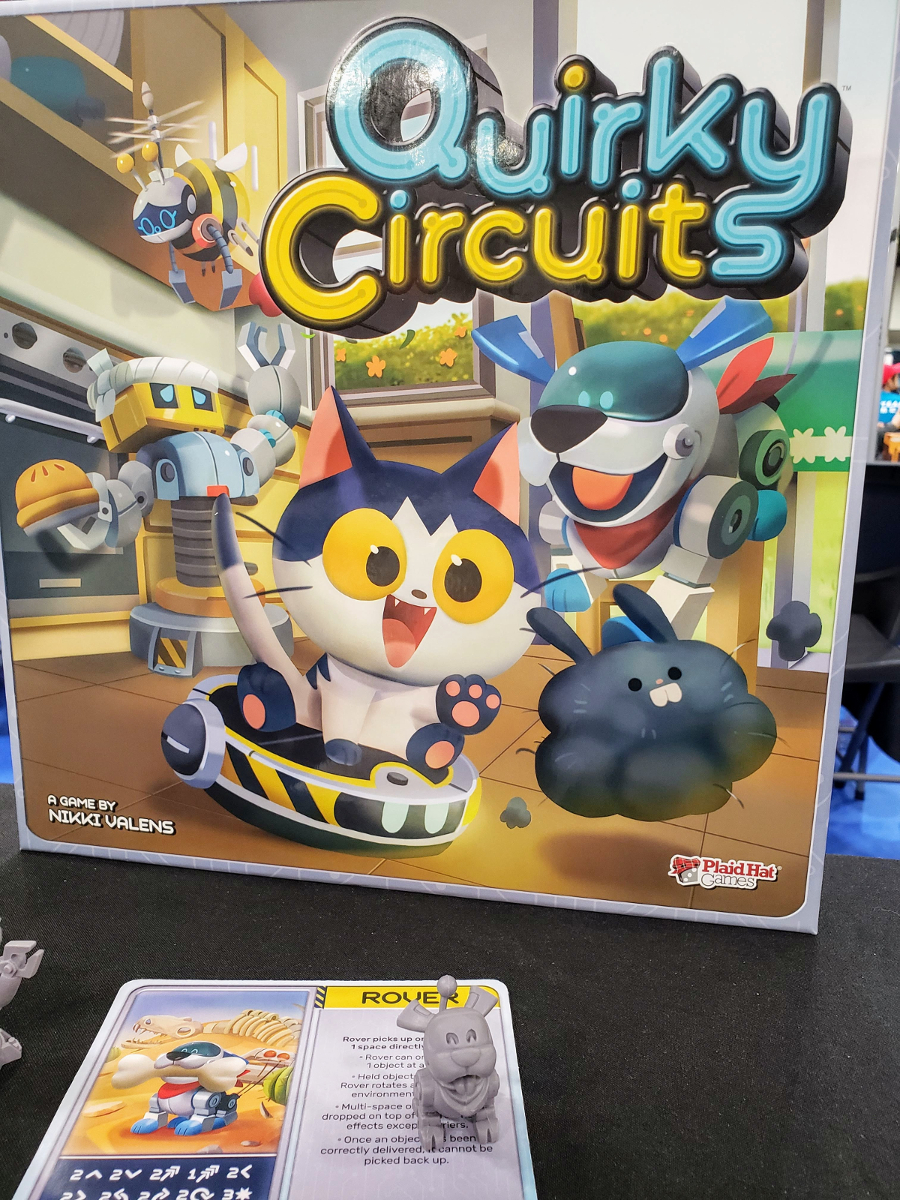
Plaid Hat had two games on display at Origins this year, and while much of the attention overall was focused on their medium-weight gothic horror strategy game Abomination, where you get to embrace your inner Dr. Frankenstein, there was also ample enthusiasm for their other upcoming Gen Con title, Quirky Circuits. Which I believe will end up being the bigger of the two releases. Not because it’s lighter, or cooperative, or because gothic horror can often be a hard sell thematically, but because, well, it’s also really good. With Quirky Circuits, players work as a team to program a robot friend to navigate around various scenario layouts of increasing difficulty. This is done by each person playing a movement card simultaneously each turn, with the order of them being played the order they get resolved. The catch is that those cards are face down, and so no one knows precisely what is going to happen. Instead, there’s a lot of inference about what you think your teammate will do and what you should do to planning accordingly. But, of course, like all great programming games, hijinks ensue when things inevitably go awry. Wonderfully, wonderfully awry.
With adorable figures and a lighthearted, goofy concept, definitely keep Quirky Circuits programmed in to your Gen Con experience.
Also: I’m not saying you could get the game solely for the figures, but…
Sierra West
Publisher: Board & Dice | Players: 1-4 | Play Time: 40-60 Minutes
Look, I get it: westerns are hard for a fair amount of gamers to get into. Many find the theme boring, reductive, repetitive, or even stale, and it can sometimes feel like a challenge finding any western-themed game without a poker element (seriously, chill). It’s a theme with an uphill battle, and so there is a preference to dismiss them outright as a result. There are obvious well-earned exceptions to this, of course, but as a general rule, to make a western game work, you need to do something different.
Sierra West does something different.
Broken down into four different playable modules, Board & Dice plan on sharing this one with the world come Gen Con. The overall premise is fairly straightforward: you are an expedition leader guiding pioneers through the Sierra Nevada. What the game has in generic theme it easily makes up for in its mechanics, however, by the original way of how you take actions in the game. Each turn, you will generate two action paths for your units, which determine which tasks you’ll undertake for the turn such as moving your wagon, gaining resources, and mining the mountain. The twist is that order that these occur, and in what frequency, is dictated by a handful of cards in your hand that you slot, shift, and overlap each turn. This leads to a fair amount of different permutations and generates some appealing strategic decision-making as you try to achieve the module’s primary objectives. It’s an uncommon mechanical approach in strategy games, and that alone makes it worth saddling on over to check out at Gen Con.
Also: Board & Dice also plans on having the expansion for Teotihuacan on hand, so it should be a win-win.
Thus wraps up Origins 2019. This time around proved to be much less stressful thanks to the avoidance of thunderstorms wracking the entire eastern seaboard and some genuine improvements in how the convention functions overall, which is laudable. There’s still work to be done, but I’m quite happy with the progress that’s being made. For many gamers it’s the right mix between a casual gaming convention where you can simply hang out and play games and an expo, where you get to see what’s new and upcoming from this ever-growing industry. I enjoy both styles with equal alacrity, and so Origins fits both sides of my gaming sensibilities.
Origins may not be an auto-attend convention for us every year (remember the whole time and money thing), but it’s certainly one that we’re willing to consider more than we have in the past.
This particular year’s Origins also proved to be a bit cathartic on a personal and professional level for myself and our perceived place in the industry, which was reassuring and reinvigorating after us contending internally for a while with issues of coverage burnout. Seeing friends at meetups and in hallways, playing games both serious and not, and receiving a fair bit of unexpected praise from publishers and peers alike all helped rejuvenate us going forward. Which, if nothing else, is probably the one thing that’s truly hard to reproduce outside of a convention.
In all, Origins 2019 had a lot to see and do, and with more good things to report than bad, it appears that their restructuring is on the right track. Even if that track takes you right into Gen Con.


